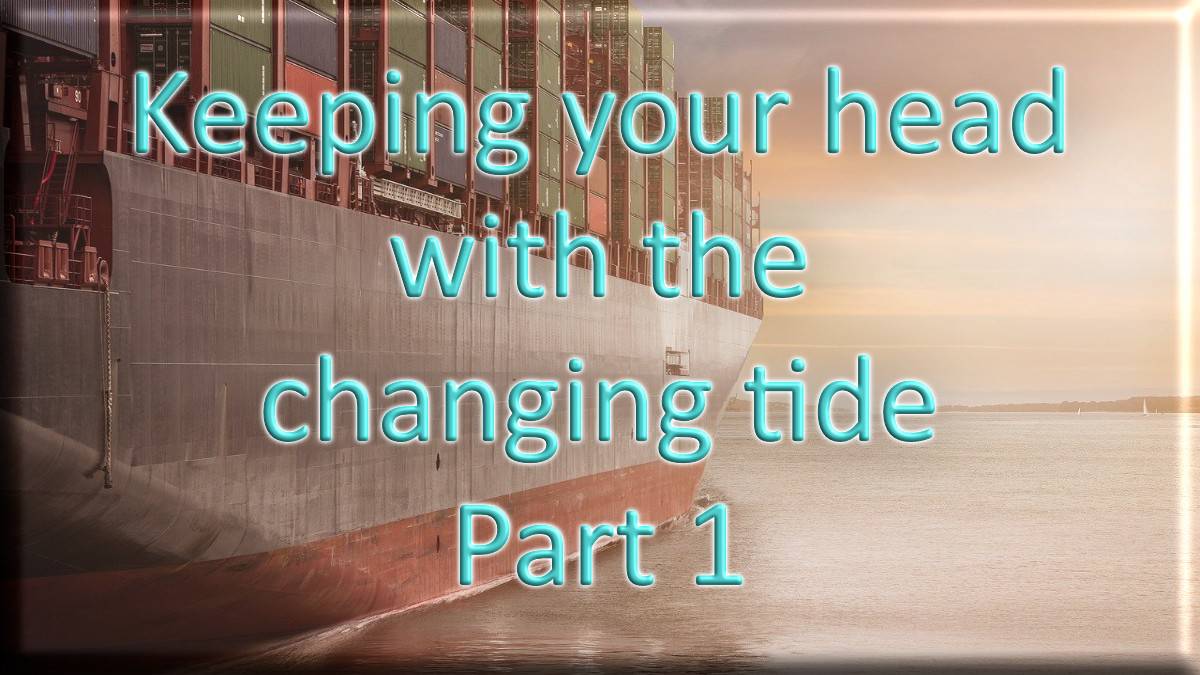Any business trading with the EU will need some form of export system. After an uncertain few years, we now have clarity about future trade with the EU. Now it’s time to make the business changes for our EU free trade agreement. In this article, we look under the covers of what’s involved & why it’s done.
Keeping your head with the changing tide
In this series “Keeping your head with the changing tide”, we grapple with the changes in trading with the EU. We explore how to steer your business systems for better export results. Firstly, we set the scene in “Export System: Gain Better Clarity to Avoid Confusion”. Our second article looks at “How to Reduce Export Cost with Digital”. In our third article we look at reducing paperwork and improving flow in “Avoid Feeling Exposed with an Electronic Customs Declaration”. Finally, we round off with “How do I Manage Change and Keep People Happy?”.
Systems and processes work better when designed as a business system. Our guide, Business System: An Essential Guide to Growth, will help you design a robust system for better results.
What’s involved
At its simplest, an export system safely delivers goods to a buyer in another country. That said, countries, customs unions, and the United Nations have rules for safety, economic and political reasons. This involves trade agreements, standards, custom borders, licences, duties, and taxes.

If that wasn’t complex enough, you use shipping containers, pallets, and boxes to physically transport goods – so weight and size are important. Then there are goods that have additional requirements such as frozen food, perishables, and dangerous goods.
The UK EU Free Trade Agreement (FTA) means that goods from the UK are not subject to customs duties in the EU and vice-versa. That said, they must still clear customs, are subject to rules, and must qualify for the zero-duty. In addition, you pay VAT locally, so it’s not only about clearing customs.
So how exactly is all that done?
Classification
The first piece in how an export system works is classification. Just like certain things in the UK have a zero or reduced VAT, so customs duties depend on the item. It’s a bit more complex, because what you export from one country you import into another, so it’s an international standard. It must also work across multiple languages. The answer is to use a number system, called a commodity or HS code to classify an item.
Once you know the code, you can find out if you need a licence, the customs duty and VAT. It might sound simple, but with over 1400 codes it can be confusing to find the right code. The code will say whether you need a licence or certificates, for example for food standards. Using the right code means paying the right amounts or benefiting from a zero tariff! This is important financially as well as avoiding a compliance issue.
Origin

There’s free trade for products with an origin from the UK or EU, but origin is a hot topic. In the USA, domestic honey production nearly collapsed due to cheap imported adulterated honey. So, customs & duties are important for the local economy as well as for food and safety standards. Countries also want to protect against dumping where prices of imports are artificially low due to foreign government subsidies. There are also UN economic sanctions that restrict trade to certain countries.
If you export a product made from UK resources, that’s straight forward. But what if you make something complex, with suppliers all over the world such as a food item or complex equipment. Part of that is knowing where everything comes from, also known as the supply chain. You may also make the case that you transformed the source materials into something of greater value. Your export system needs to involve an understanding of the supply chain, evidence of origin, and making your case.
The Value of Goods
The export system also needs to know what duties or VAT to pay. The classification and origin tell you what custom duties or reliefs are applicable. In order to work out how much to pay, you need to have a true valuation. It’s obviously fraud if you understate the value to avoid paying duty or VAT!
Finally
The export system documentation ensures compliance with the free trade agreement; for standards & safety; and to provide information needed for safe and efficient transportation. It’s also for the local VAT! When done well, it reduces cost of exporting and avoids delays.
If you’d like to have a chat about your export system needs, give me a call on 01344 266567 or contact me on rhounsell@kr5consulting.com or DM on LinkedIn to arrange an initial meeting.

